Are you ready to be blown away by some incredible facts about the Everest Base Camp? Hold on tight because we are about to embark on an exciting journey to the roof of the world! Imagine standing at the base of the highest peak in the world, Mount Everest, towering high at a staggering altitude of 8,848 meters above sea level. For mountaineers, this is the ultimate dream but for those who want to experience the awe-inspiring beauty of the Himalayas without climbing the peak, the Everest Base Camp is the next best thing.
Location and Altitude of Everest Base Camp
Everest Base Camp is located in the Khumbu region of Nepal near the village of Gorak Shep. It is situated on the south side of Mount Everest the tallest peak in the world and is one of the highest base camps in the world. The base camp is located at an altitude of 5,364 meters above sea level which means that the air is thin and the oxygen levels are lower than at sea level. Reaching the base camp requires a multiday trek through the Khumbu region which is known for its rugged terrain, steep inclines, and stunning natural beauty.
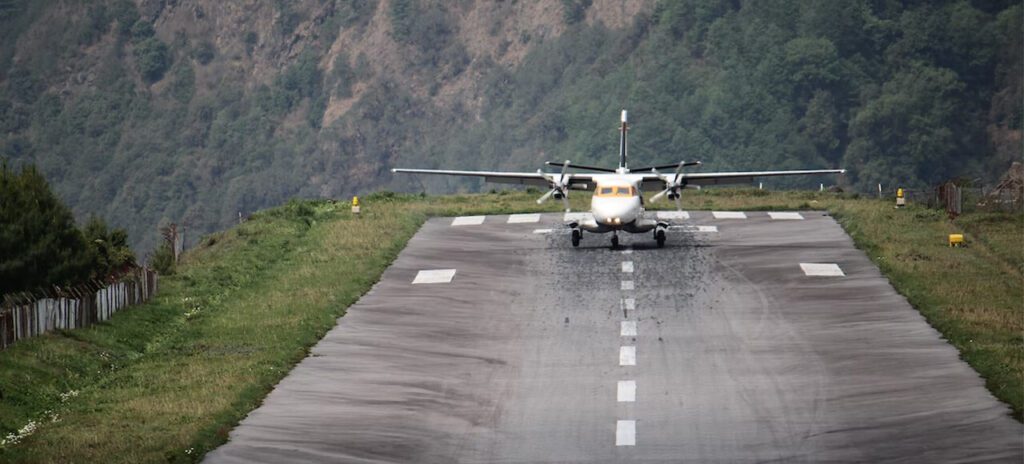
The trek starts in the town of Lukla, which is accessible by a short flight from Kathmandu the capital of Nepal. From there, trekkers make their way through a series of villages including Namche Bazaar, Tengboche, and Dingboche, before reaching Gorak Shep and finally Everest Base Camp.
There exist two base camps that are associated with Mount Everest
The South Base Camp is the more popular of the two and is located in Nepal at an altitude of approximately 5,364 meters in the Khumbu region. It is the starting point for most of the expeditions attempting to climb Mount Everest via the Southeast Ridge route. The South Base Camp is accessible via a trek that begins in the town of Lukla and takes around 10 days to complete. The trek takes climbers through a variety of landscapes including forests, glaciers, and snow-covered peaks.
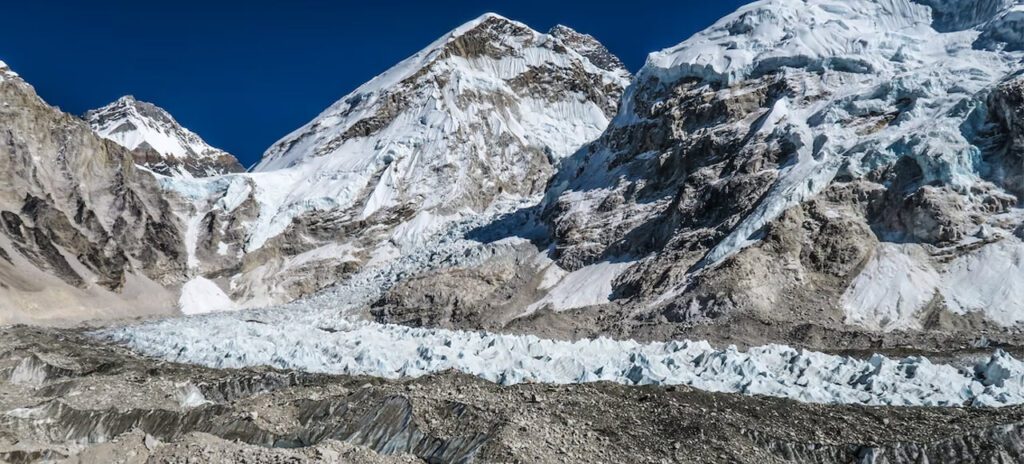
On the other hand, the North Base Camp is situated in Tibet at an altitude of approximately 5,150 meters. It is the starting point for climbers attempting to summit Mount Everest via the North Ridge route. The North Base Camp is accessible via a jeep ride from the town of Tingri and a trek that takes around 4-5 days to complete. The North Base Camp offers a different perspective of Mount Everest and the surrounding mountains compared to the South Base Camp.
Reasons why the Everest base camp trek is one of the most popular treks in the world
The Everest Base Camp trek is a popular trekking destination for people from all over the world. There are several reasons why this trek is so popular.
Firstly, the trek offers stunning views of the Himalayas including Mount Everest, Lhotse, Nuptse, and Ama Dablam. Trekkers can also enjoy beautiful landscapes, serene valleys, and lush forests along the way. Secondly, the trek provides an opportunity to experience the unique culture and way of life of the Sherpa people who live in the region. Visitors can visit monasteries, and traditional villages and interact with the locals to learn more about their customs and traditions.

Thirdly, the physical challenge of the trek is a major draw for many people. Trekking to the base camp requires acclimatizing to high altitudes and tackling steep inclines and declines.
Fourthly, the trek provides a sense of adventure with trekkers crossing high suspension bridges, hiking through rugged terrain, and camping under the stars.
Fifthly, reaching the base camp is a significant accomplishment for many trekkers providing a sense of perseverance, determination, and mental and physical endurance.
Lastly, the trek allows trekkers to connect with nature and immerse themselves in the tranquility of the natural surroundings.
A cultural experience is one of the main draws of the Everest Base Camp
One of the main reasons why people are drawn to the Everest Base Camp trek is the opportunity to have a unique cultural experience. The trek takes visitors through several traditional Sherpa villages where they can learn about the culture and way of life of the Sherpa people who live in the region. The Sherpas are known for their warmth, hospitality, and unique customs and trekkers can witness these firsthand by interacting with the locals, visiting monasteries and gompas, and participating in traditional ceremonies and festivals. Visitors can also sample local cuisine and stay in tea houses run by local families.
Also Read: Everest Base Camp in April – Temperature, Weather, Clothing, & Travel Tips
The cultural experience of the Everest Base Camp trek is not limited to the Sherpa culture. The trek also passes through villages inhabited by other ethnic groups, including Tamangs, Rais, and Gurungs each with their unique customs, traditions, and way of life. This diversity of cultures and experiences makes the Everest Base Camp trek a truly enriching and unforgettable adventure.
The stunning landscape of the Everest base camp trek is renowned worldwide
One of the major factors contributing to the popularity of the Everest Base Camp journey among hikers is the simply stunning scenery. Landscapes on the journey range from green woods and lush valleys to rough mountain topography and breathtaking glaciers providing an amazing variety of scenery. The trek also provides stunning views of the world’s highest peaks, including Mount Everest, Lhotse, Nuptse, and Ama Dablam.

The trek is also home to several pristine lakes including Gokyo Lake which is considered one of the most beautiful high-altitude lakes in the world. The crystal clear waters of the lake surrounded by snow-capped peaks provide a picture-perfect view that trekkers will never forget.
Highest peak surrounding the Everest base camp
The Everest Base Camp is encircled by some of the world’s highest and most awe-inspiring peaks each with its unique challenges and breathtaking features that will leave any adventurer on the edge of their seat.
Standing tall and mighty at the center of it all is the magnificent Mount Everest, the highest peak on the planet which towers above all others with its majestic summit reaching an incredible elevation of (8,848.86 meters). It is fondly called “Goddess Mother of the Earth” by the Tibetan people.
Also Check: An Overview of Everest Base Camp
But the towering giant is not alone in its grandeur. The mighty Lhotse, standing at 8,516 meters is the fourth highest mountain in the world and boasts of the incredibly steep and challenging Lhotse face which mountaineers use to acclimatize before their Everest summit attempt. Nuptse, standing tall at 7,861 meters showcases its distinct shape and impressive ridge leading to its peak.
And Pumori standing at 7,161 meters with its enchanting pyramid shape and icy slopes presents a daring climb to those seeking to push their limits.
The location of base camp is within Sagarmatha national park
Sagarmatha National Park is one of the most popular national parks in the world located in the Solukhumbu district of eastern Nepal. The park is home to Mount Everest and several other peaks of the Himalayan range including Lhotse, Nuptse, and Cho Oyu. The park covers an area of 1,148 square kilometers (443 square miles) and is home to a diverse range of flora and fauna including rare species such as the snow leopard and red panda.
The park’s vegetation is divided into several zones including sub-tropical, temperate, and alpine each with its unique plant and animal life. The location of the Everest Base Camp within the Sagarmatha National Park offers trekkers a chance to experience the natural beauty of the Himalayas and the cultural richness of the Sherpa people. The park was enlisted as a UNESCO World Heritage site in 1979 and its preservation is crucial to maintain the fragile ecosystem of the region.
This trek can be physically and mentally challenging
The Everest Base Camp trek is a challenging journey that requires physical and mental preparation. The trek involves walking on rugged and rocky terrain with steep ascents and descents. Trekkers are required to navigate through high-altitude passes and overcome altitude sickness which can cause headaches, nausea, and fatigue. To embark on this trek trekkers should be physically fit and mentally prepared for the challenges ahead. They need to have endurance, strength, and the ability to withstand harsh weather conditions.
Training before the trek is essential and trekkers should be prepared to walk for several hours a day carrying a backpack with essential gear and supplies. Mental toughness is also critical during the Everest Base Camp trek. The journey can be long and demanding and trekkers may face unforeseen obstacles that require patience and perseverance. Altitude sickness can be a significant challenge and trekkers need to be aware of the symptoms and be prepared to take necessary precautions.
The weather in this EBC is unpredictable
The weather in Everest Base Camp is highly unpredictable and trekkers should be prepared for sudden changes in weather conditions. The region experiences four distinct seasons with each season presenting different weather patterns and temperatures.
During the spring season (March to May) the weather is generally mild with temperatures ranging from 10°C to 15°C during the day and dropping to -5°C to -10°C at night. However, the weather can be highly unpredictable during this time and trekkers may encounter unexpected snowstorms and high winds.
The summer season (June to August) is characterized by monsoon rains and the weather can be extremely wet and humid. Trekkers should be prepared for heavy rainfall, muddy trails, and the possibility of landslides.
The autumn season (September to November) is the most popular time to trek to Everest Base Camp due to the stable weather conditions. The days are warm and dry with temperatures ranging from 10°C to 20°C. However, the nights can be cold with temperatures dropping to -10°C.
The winter season (December to February) is the coldest time of the year with temperatures ranging from -10°C to 5°C during the day and dropping to -20°C at night. Trekkers should be prepared for freezing temperatures and the possibility of snowstorms.
Side trek in EBC
As you step into the world-renowned Everest Base Camp you’re transported to a world of unparalleled beauty and adventure. But what if I told you that there’s a whole world of side treks waiting to be explored? From stunning views of the Himalayas to ancient monasteries and Sherpa villages here are some of the most thrilling side treks you can do in Everest Base Camp.
Kala Patthar – The Ultimate Challenge
Kala Patthar is a challenging side trek that promises one of the most breathtaking views of the Himalayas. The climb to the top is steep, and rocky, and takes about 2-3 hours to complete. But once you reach the summit at 5,545 meters, the view of Mount Everest, Nuptse, and Lhotse is absolutely worth it.

As the sun begins to set the mountains begin to glow a deep orange hue that creates a surreal and unforgettable experience.
Gokyo Lakes – A Stunning Natural Wonder
Gokyo Lakes are a series of six stunning turquoise glacial lakes that are a must-visit for nature lovers. The trek to the lakes takes you through stunning valleys and over high passes, offering stunning views of Mount Everest, Cho Oyu, and Lhotse.
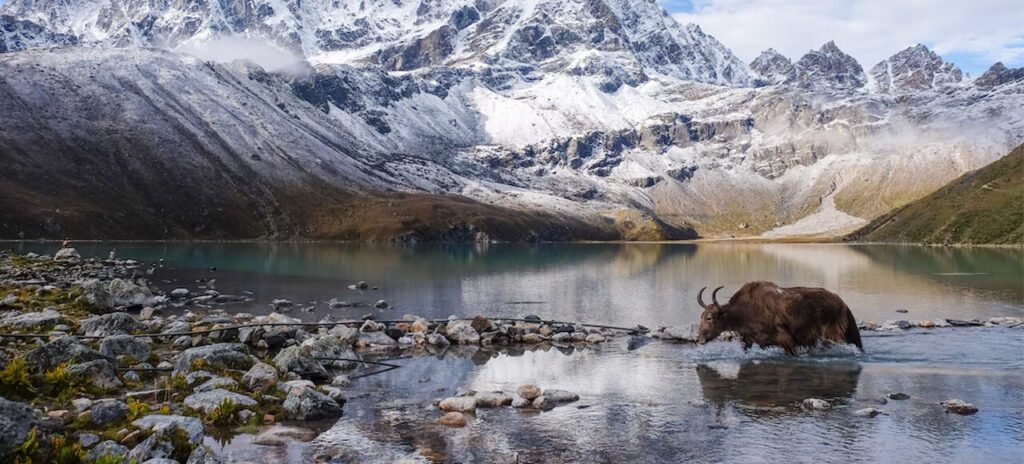
Once you reach the lakes you’ll be awestruck by the deep blue color of the water. It’s like nothing you’ve ever seen before. Trekking around the lakes is a tranquil experience that’s hard to put into words.
Khumjung and Khunde – A Peek into the Sherpa Life
The villages of Khumjung and Khunde are nestled in the heart of the Khumbu region and offer a glimpse into the local Sherpa culture and way of life. Khumjung is home to the famous Khumjung Monastery which houses the Yeti scalp and Khunde boasts of the Khunde Hospital, established by Sir Edmund Hillary.
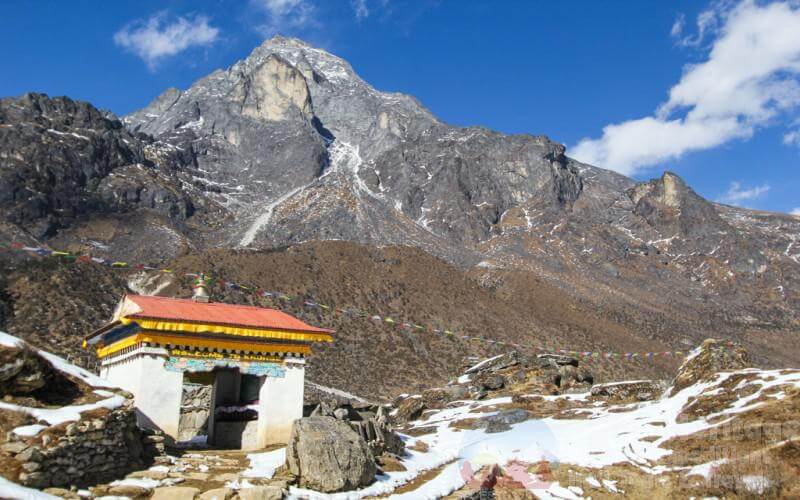
The trek to these villages takes you through beautiful mountain landscapes and offers stunning views of Mount Everest and other Himalayan peaks.
Island Peak – A Challenging Summit Climb
Island Peak also known as Imja Tse, is a challenging peak climb that takes you to the summit at 6,160 meters. The climb requires technical skills and a high level of fitness but the view from the top is simply unforgettable.
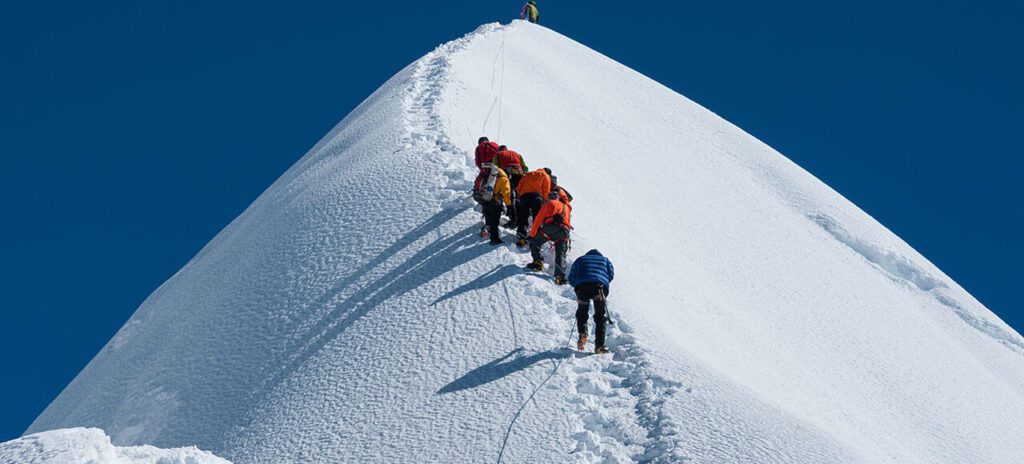
The peak offers stunning views of Lhotse, Makalu, and other peaks in the Himalayas.
Best time to visit Everest base camp
The best time to visit Everest Base Camp is during the spring and autumn seasons. The spring season offers mild weather with clear skies and excellent views of the surrounding mountains. Autumn season is also a great time to visit with stable weather, beautiful scenery, and fewer crowds. The weather tends to be stable during these times of the year with a mild temperature, little precipitation, and excellent visibility. However, bear in mind that the weather in the highlands can be erratic, so it’s important to check the weather prediction and be ready for any adjustments.
It’s important to keep in mind that the monsoon season may disrupt the monsoon’s lovely views of the mountains by bringing heavy rain and hazy clouds. Reaching Everest Base Camp during the winter can be challenging because of the extreme weather and the possibility of blocked high routes from snowfall.







